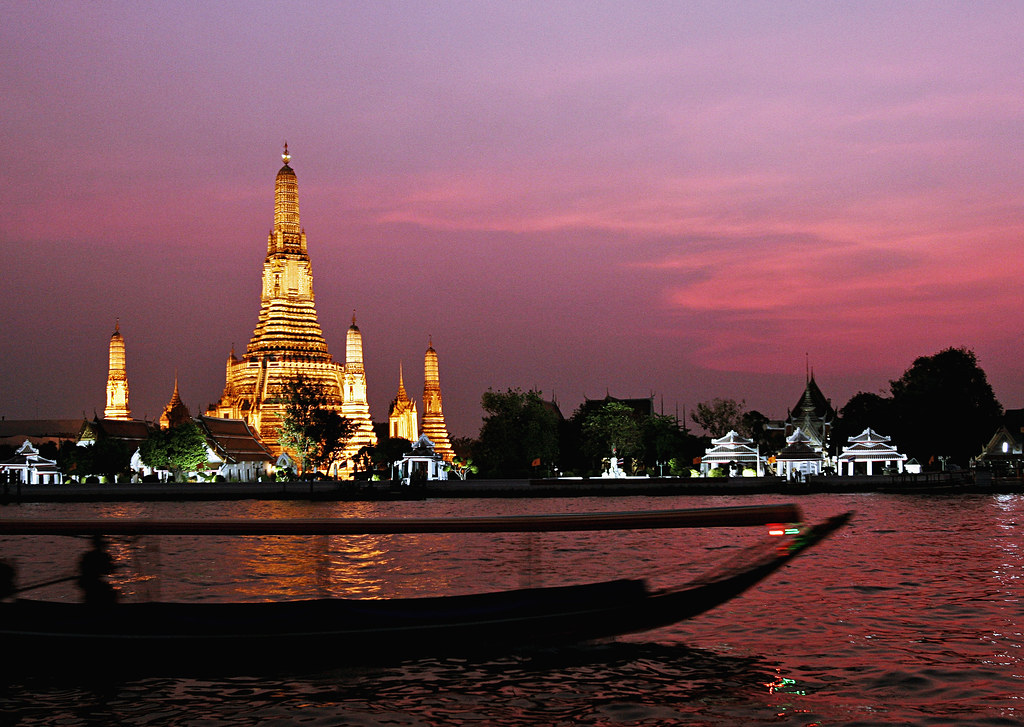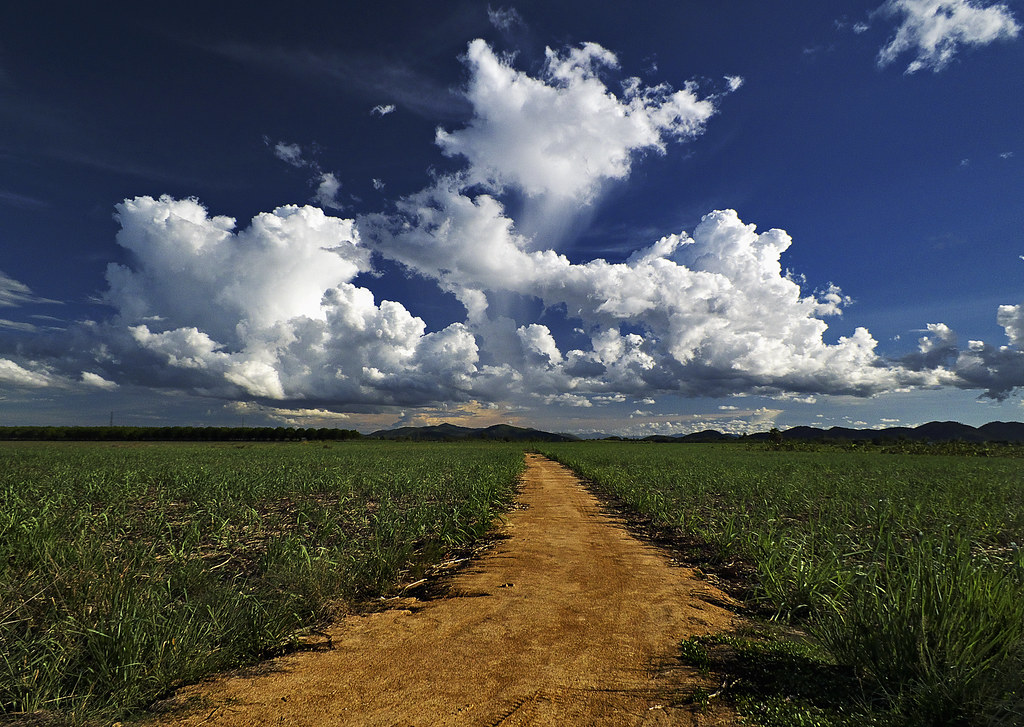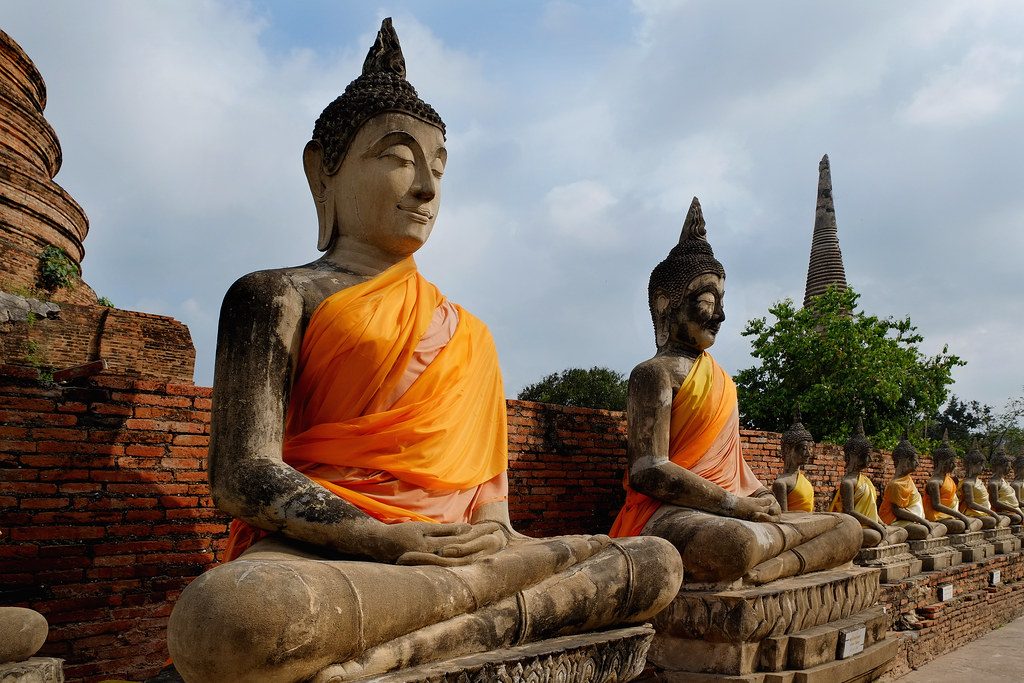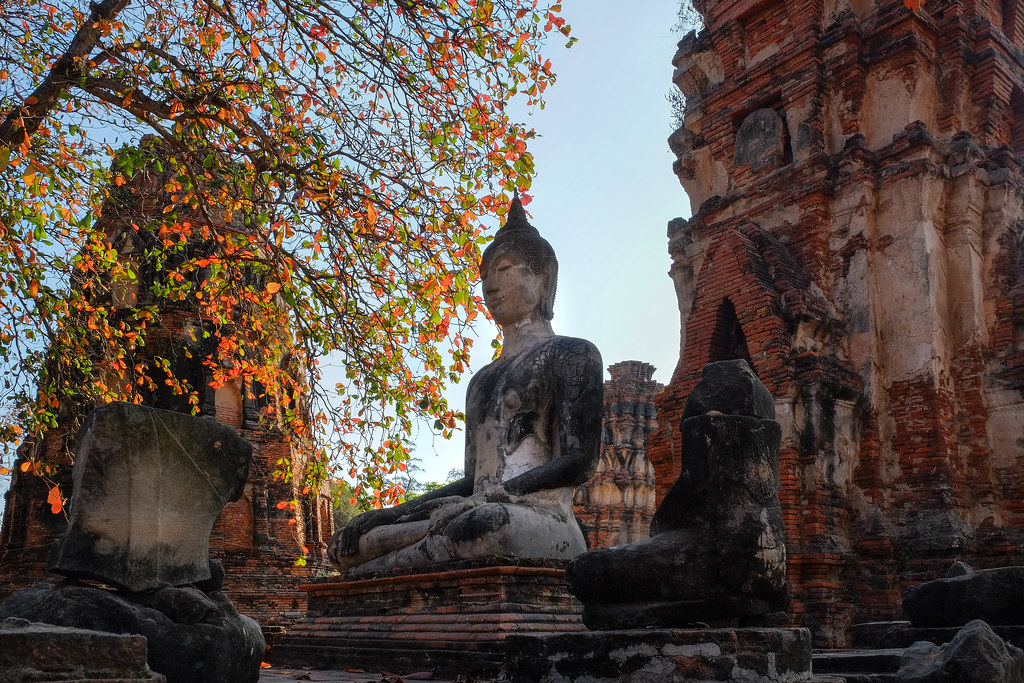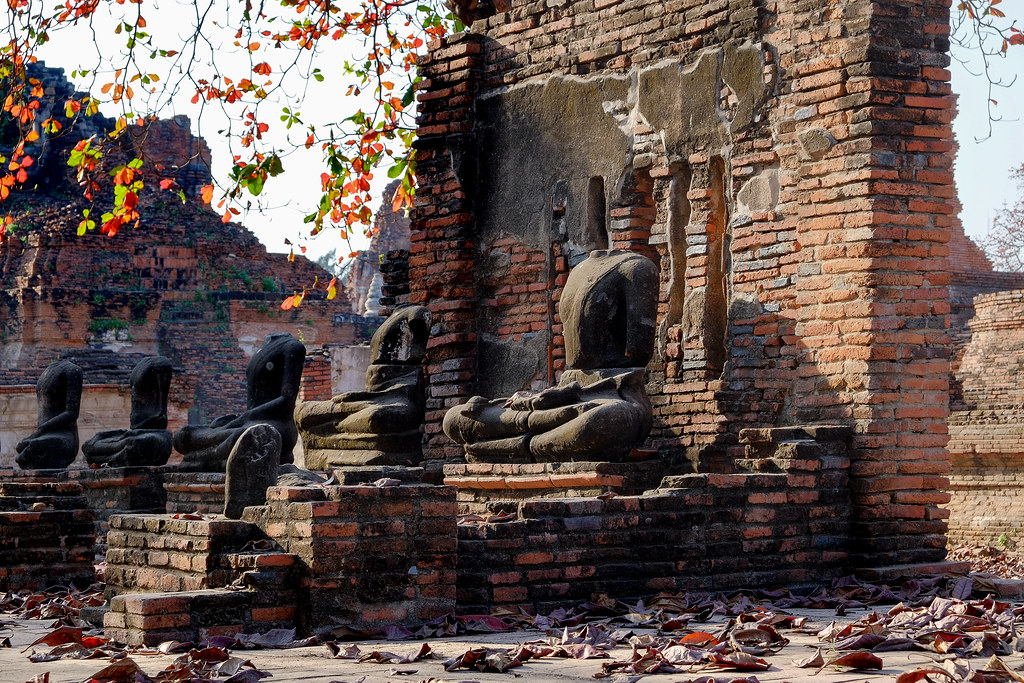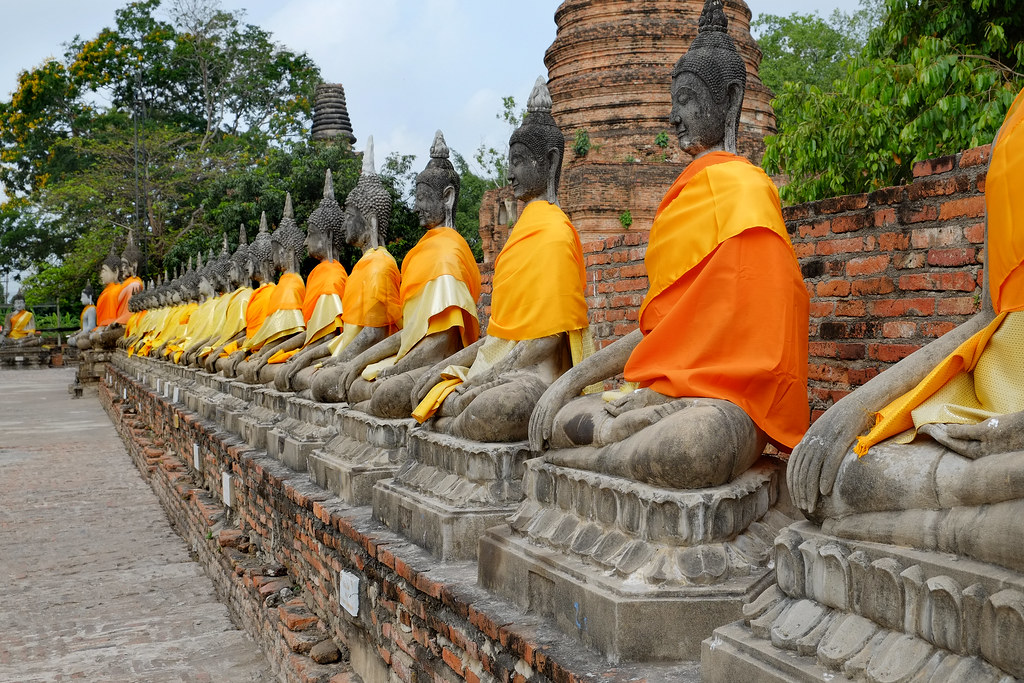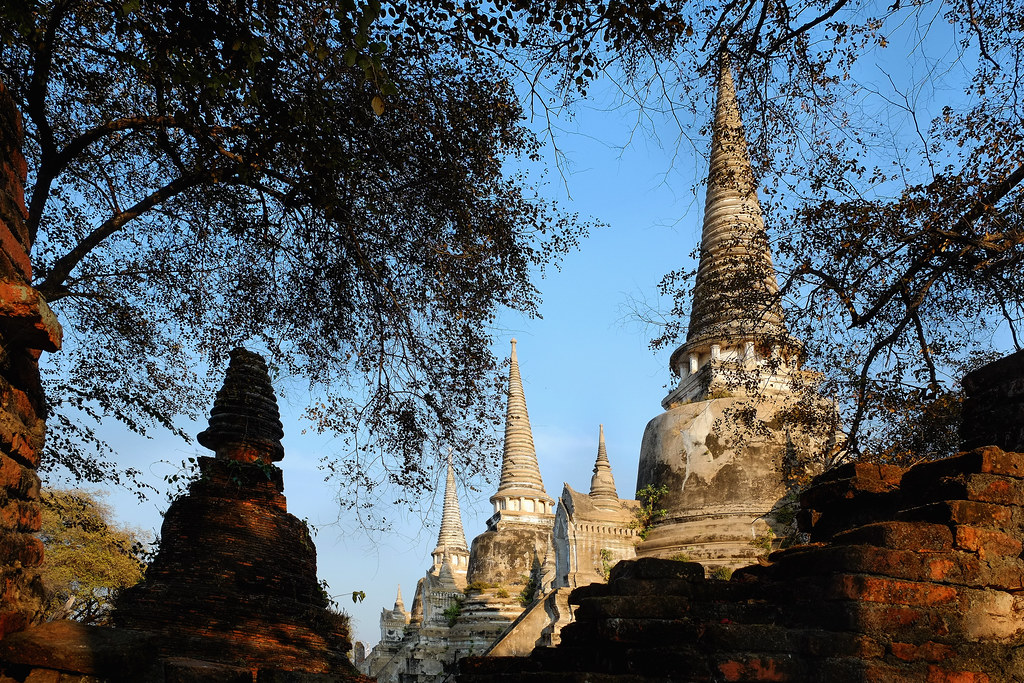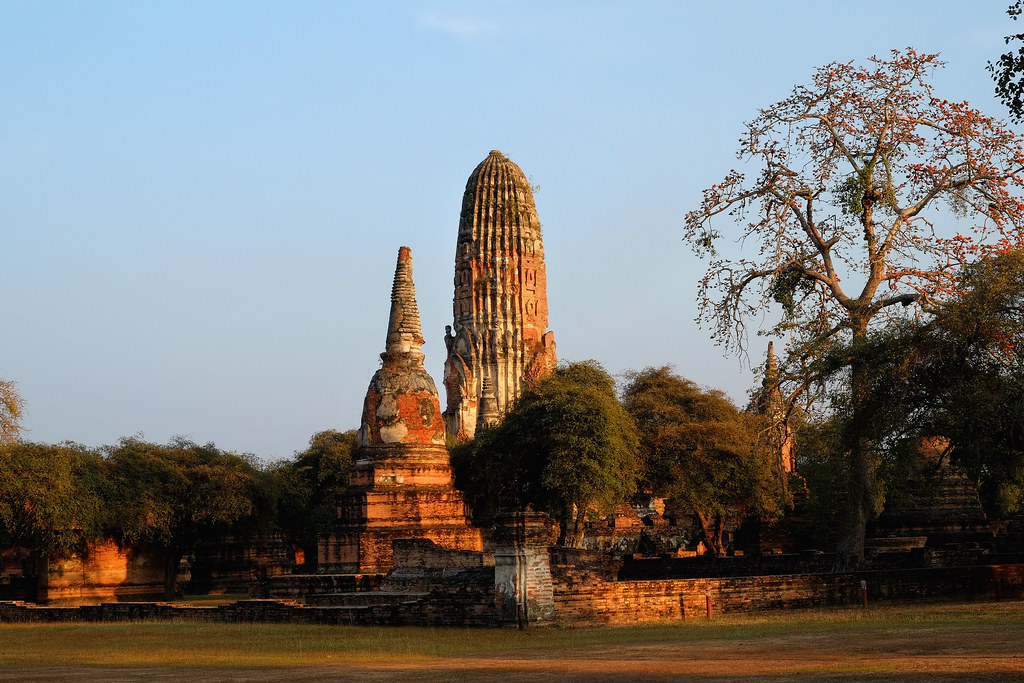... Went out for a hair cut today and decided to take my HS30 EXR
with me and take some images at the wet market. First time I have
touched the camera in four years
All edited using my PP Tip 21 but using Velvia instead of Provia
I was originally planning to take the X-E1 but as I wanted to mainly
shoot at waist level it was more expedient to take a camera with a
tilting LCD which neither the X-E1 or XF1 have and the HS30 was sitting
on the desk in front of me
Stopped at an eclectic coffee shop first for a coffee and a sandwich
Sunday 31 December 2017
Thursday 28 December 2017
Wat Arun Bangkok Thailand
An old image with a fresh edit. Wat Arun (Temple of Dawn) on the banks of the Chao Praya river in Bangkok
This image was used as the cover image for the Dreams of Thailand - Bangkok book
This image was used as the cover image for the Dreams of Thailand - Bangkok book
Tuesday 26 December 2017
Sunset At Krabi
Not a new image. In fact I think it was taken in 2004 or 2005. Shot with my GA645 using E100VS. I really miss that film emulsion
Labels:
blog,
dave lloyd,
e100vs,
eyemindsoul,
film,
ga645
Sunday 24 December 2017
Glad I Blogged My PP Tips
I've barely touched a camera in the past four years but this week charged the batteries on a couple and took some images. Having done little photography I had forgotten many of the PP tricks.
The two below were both done using PP Tip 5. Not new images but new edits today
The two below were both done using PP Tip 5. Not new images but new edits today
Labels:
blog,
dave lloyd,
eyemindsoul,
post process,
pp,
tips
There's A Track Leading Back ...
If you're an Ozzie you'll know the song
An oldie from my Fuji HS-10 - Wish I still had it
New edit using my PP Tips 17 and 21
An oldie from my Fuji HS-10 - Wish I still had it
New edit using my PP Tips 17 and 21
Labels:
blog,
dave lloyd,
eyemindsoul,
fuji,
hs10
Ayuthaya Revisited
Some recent pictures taken at Ayuthaya (Ayutthaya) which was the capital city of Siam (Thailand) and was sacked and destroyed in 1767
All taken with my Fuji X-E1. Great camera
All taken with my Fuji X-E1. Great camera
Labels:
ayuthaya,
blog,
dave lloyd,
eyemindsoul,
fuji,
x-e1
Saturday 23 December 2017
Bokeh
Bokeh ? What is it ? And, how to avoid stepping in it.
The reason I say how to avoid stepping in it, is that there were recently two posts on one of the forums I participate in. One was titled 'The Bokeh Thread', the other 'The Anti Bokeh Thread'.
Now, the two original posters are both photographers whose work I admire. I doubt either was looking to start a fight, simply expressing their point of view. However all the usual wannabees jumped in quickly to offer their tuppence worth.
Quickly, some of the resident armchair authorities dived into the 'sea of opinion' and totally muddied the waters. Well, I think it was mud, but could have been something less pleasant.
They quickly attempted to stamp their long winded authority on the subject and determined that in every minions best interest they would write the authorative text book on the subject. Seriously ! I hope they trip over a pile of bokeh in the street and have a very unpleasant end.
The threads became a total waste of time to read and headed toward 'train wrecks' at an alarming rate.
The point here is that few participating in the threads understood what bokeh means, and certainly did not understand how to describe it.
In the end, I doubt anyone learned anything.
Do I understand it ? Yes, and no.
The word bokeh is a Japanese word and the definition is fuzzy in itself.
Fuzzy ? Yes, that's basically what the word means. Is it any wonder we cannot get a clear understanding of bokeh if all the word means is - Fuzzy.
What does fuzzy mean ? When I was a teenager and into my early twenties, I had 'fuzzy' hair. It was long, curly and frizzy. Fuzzy. Well that is what polite people called it.
What does hair have to do with bokeh ? Nothing, except that my describing what my fuzzy hair looked like is completely meaningless unless you can see an image which shows it. I'll bet you've got a dozen different pictures popping up in your head now, as to what fuzzy hair looks like.
I'm not going to show you an image but to help with the general 'picture', if you're familiar with Jimi Hendrix you're on the right track, except that his hair was short.
So, in it's purely literal sense - Bokeh (boke) is a Japanese word which means fuzzy, dizzy, hazy, (mentally) confused.
For photography purposes, the term can be simply used to describe the out of focus areas of an image. Hence, we get terms like good bokeh, smooth bokeh, creamy bokeh, even bad bokeh.
If you read a dozen internet articles you will get a dozen different opinions on what bokeh means.
I am not going to link to any of them, you can search them out at your own peril. Afterward, take a couple of 'Tylenol' and have a nap. You may wake up feeling a little less confused.
One of the better internet articles makes a simple statement, to paraphrase, that Bokeh has come to describe the quality of the out of focus areas of an image.
The key point here is quality. An image may have out of focus areas but that does not necessarily mean those areas represent any form of bokeh or even 'quality' bokeh as bokeh has an indeterminate life of its own dependent upon how you interpret the condition.
And, for the purposes of this article, that is what I will focus on, or not. Pun intended.
First of all, photography is basically about capturing a subject and ensuring that the subject is in focus.
Depending on your lens, camera, technique, etc., etc., you can achieve differing degrees of focus through a scene. All the elements in a scene can be clearly in focus, or it may be that our desire is simply to have one element in the scene in focus.
For a portrait photographer, it may well be that the desired 'plane' of focus is very narrow. Maybe the desire is to have an eye clearly in focus and let other elements, particularly the background, drift into a peaceful blur.
Conversely, for a landscape photographer, the greater the 'depth' of focus (field), the more advantageous it is to render all elements in the scene with clarity.
It all comes down to what is preferred. More specifically what is your preference.
When I think about bokeh, I am not just thinking about the amount of blur in parts of an image, I am thinking more about how aesthetically pleasing is that blur as contributing to the composition of the total scene.
Exhibit 1
I like this image for it's 'slice of life' feeling. There is a degree of subject isolation but one can still get the sense that it is a 'road' image and that the youngsters are out cruising on their motorbike.
The background displays what can rightly be described in the unpublished (never to be published) bokeh rule book as bokeh. 'Fuzzy background yet still almost discernible as to what it is and with an ever so slight drift to 'smooth' bokeh'. BS. It is bad bokeh.
For me, the background is purely and simply out of focus. It is not what I think of when I think of bokeh even though the background is certainly 'fuzzy'.
Exhibit 2
As far as I understand (stated/mis-stated) bokeh rules then the background of the below image would be called 'creamy' bokeh or 'smooth' bokeh as the background is slightly visible and looks smoothly out of focus and its inclusion enhances the foreground.
This is what I would call bokeh but dozens of other webizens may differ in their view
Reality is bokeh is a non-tangible, non-definable abstract and the perception of such can only be defined within the imagination of the individual.

Anyway, confused ? I bet you are.
I suggest you search the web if you want better answers than I can provide here. Not many photography web sites mention bokeh though as bokeh is the boogey man to be avoided at all costs.
However after your search have the Tylenol on hand again as I 100% guarantee you will end up with a worse headache than you had before.
The key to understanding bokeh is first to understand that if an image is pleasing to you then the image is pleasing and this is true of any image you may take.
If no-one else likes it but you do then you are most likely way in front as simply others cannot appreciate art as you do.
Make sure that if someone does not like it that firstly you have a full appreciation of their own body of work as there are so many armchair critics/experts out there who will tell you black is white when after all you took the image in colour and their own body of work comes nowhere near your own - I have some thoughts on this, have a look here - Frankly My Dear
And that does not apply just to bokeh but to all myriad aspects of an image.
For me and dependent upon the image bokeh can be good or not so. My examples may not necessarily be the greatest but they may start your journey to a better (limited) understanding.
The reason I say how to avoid stepping in it, is that there were recently two posts on one of the forums I participate in. One was titled 'The Bokeh Thread', the other 'The Anti Bokeh Thread'.
Now, the two original posters are both photographers whose work I admire. I doubt either was looking to start a fight, simply expressing their point of view. However all the usual wannabees jumped in quickly to offer their tuppence worth.
Quickly, some of the resident armchair authorities dived into the 'sea of opinion' and totally muddied the waters. Well, I think it was mud, but could have been something less pleasant.
They quickly attempted to stamp their long winded authority on the subject and determined that in every minions best interest they would write the authorative text book on the subject. Seriously ! I hope they trip over a pile of bokeh in the street and have a very unpleasant end.
The threads became a total waste of time to read and headed toward 'train wrecks' at an alarming rate.
The point here is that few participating in the threads understood what bokeh means, and certainly did not understand how to describe it.
In the end, I doubt anyone learned anything.
Do I understand it ? Yes, and no.
The word bokeh is a Japanese word and the definition is fuzzy in itself.
Fuzzy ? Yes, that's basically what the word means. Is it any wonder we cannot get a clear understanding of bokeh if all the word means is - Fuzzy.
What does fuzzy mean ? When I was a teenager and into my early twenties, I had 'fuzzy' hair. It was long, curly and frizzy. Fuzzy. Well that is what polite people called it.
What does hair have to do with bokeh ? Nothing, except that my describing what my fuzzy hair looked like is completely meaningless unless you can see an image which shows it. I'll bet you've got a dozen different pictures popping up in your head now, as to what fuzzy hair looks like.
I'm not going to show you an image but to help with the general 'picture', if you're familiar with Jimi Hendrix you're on the right track, except that his hair was short.
So, in it's purely literal sense - Bokeh (boke) is a Japanese word which means fuzzy, dizzy, hazy, (mentally) confused.
For photography purposes, the term can be simply used to describe the out of focus areas of an image. Hence, we get terms like good bokeh, smooth bokeh, creamy bokeh, even bad bokeh.
If you read a dozen internet articles you will get a dozen different opinions on what bokeh means.
I am not going to link to any of them, you can search them out at your own peril. Afterward, take a couple of 'Tylenol' and have a nap. You may wake up feeling a little less confused.
One of the better internet articles makes a simple statement, to paraphrase, that Bokeh has come to describe the quality of the out of focus areas of an image.
The key point here is quality. An image may have out of focus areas but that does not necessarily mean those areas represent any form of bokeh or even 'quality' bokeh as bokeh has an indeterminate life of its own dependent upon how you interpret the condition.
And, for the purposes of this article, that is what I will focus on, or not. Pun intended.
First of all, photography is basically about capturing a subject and ensuring that the subject is in focus.
Depending on your lens, camera, technique, etc., etc., you can achieve differing degrees of focus through a scene. All the elements in a scene can be clearly in focus, or it may be that our desire is simply to have one element in the scene in focus.
For a portrait photographer, it may well be that the desired 'plane' of focus is very narrow. Maybe the desire is to have an eye clearly in focus and let other elements, particularly the background, drift into a peaceful blur.
Conversely, for a landscape photographer, the greater the 'depth' of focus (field), the more advantageous it is to render all elements in the scene with clarity.
It all comes down to what is preferred. More specifically what is your preference.
When I think about bokeh, I am not just thinking about the amount of blur in parts of an image, I am thinking more about how aesthetically pleasing is that blur as contributing to the composition of the total scene.
Exhibit 1
I like this image for it's 'slice of life' feeling. There is a degree of subject isolation but one can still get the sense that it is a 'road' image and that the youngsters are out cruising on their motorbike.
The background displays what can rightly be described in the unpublished (never to be published) bokeh rule book as bokeh. 'Fuzzy background yet still almost discernible as to what it is and with an ever so slight drift to 'smooth' bokeh'. BS. It is bad bokeh.
For me, the background is purely and simply out of focus. It is not what I think of when I think of bokeh even though the background is certainly 'fuzzy'.
Exhibit 2
As far as I understand (stated/mis-stated) bokeh rules then the background of the below image would be called 'creamy' bokeh or 'smooth' bokeh as the background is slightly visible and looks smoothly out of focus and its inclusion enhances the foreground.
This is what I would call bokeh but dozens of other webizens may differ in their view
Reality is bokeh is a non-tangible, non-definable abstract and the perception of such can only be defined within the imagination of the individual.

Anyway, confused ? I bet you are.
I suggest you search the web if you want better answers than I can provide here. Not many photography web sites mention bokeh though as bokeh is the boogey man to be avoided at all costs.
However after your search have the Tylenol on hand again as I 100% guarantee you will end up with a worse headache than you had before.
The key to understanding bokeh is first to understand that if an image is pleasing to you then the image is pleasing and this is true of any image you may take.
If no-one else likes it but you do then you are most likely way in front as simply others cannot appreciate art as you do.
Make sure that if someone does not like it that firstly you have a full appreciation of their own body of work as there are so many armchair critics/experts out there who will tell you black is white when after all you took the image in colour and their own body of work comes nowhere near your own - I have some thoughts on this, have a look here - Frankly My Dear
And that does not apply just to bokeh but to all myriad aspects of an image.
For me and dependent upon the image bokeh can be good or not so. My examples may not necessarily be the greatest but they may start your journey to a better (limited) understanding.
Labels:
blog,
bokeh,
dave lloyd,
eyemindsoul,
forum
Subscribe to:
Posts (Atom)































